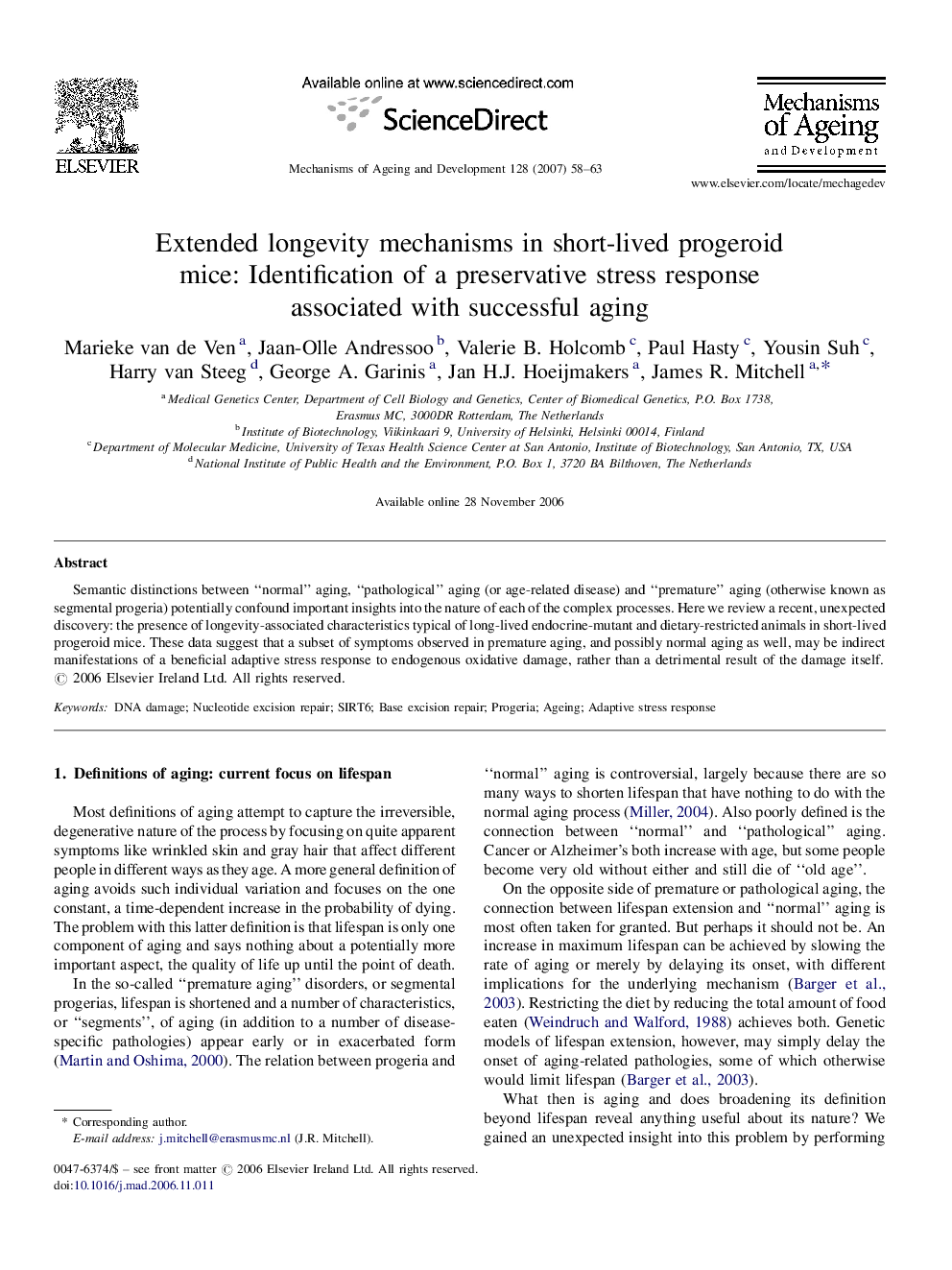| Article ID | Journal | Published Year | Pages | File Type |
|---|---|---|---|---|
| 1919908 | Mechanisms of Ageing and Development | 2007 | 6 Pages |
Abstract
Semantic distinctions between “normal” aging, “pathological” aging (or age-related disease) and “premature” aging (otherwise known as segmental progeria) potentially confound important insights into the nature of each of the complex processes. Here we review a recent, unexpected discovery: the presence of longevity-associated characteristics typical of long-lived endocrine-mutant and dietary-restricted animals in short-lived progeroid mice. These data suggest that a subset of symptoms observed in premature aging, and possibly normal aging as well, may be indirect manifestations of a beneficial adaptive stress response to endogenous oxidative damage, rather than a detrimental result of the damage itself.
Keywords
Related Topics
Life Sciences
Biochemistry, Genetics and Molecular Biology
Ageing
Authors
Marieke van de Ven, Jaan-Olle Andressoo, Valerie B. Holcomb, Paul Hasty, Yousin Suh, Harry van Steeg, George A. Garinis, Jan H.J. Hoeijmakers, James R. Mitchell,
